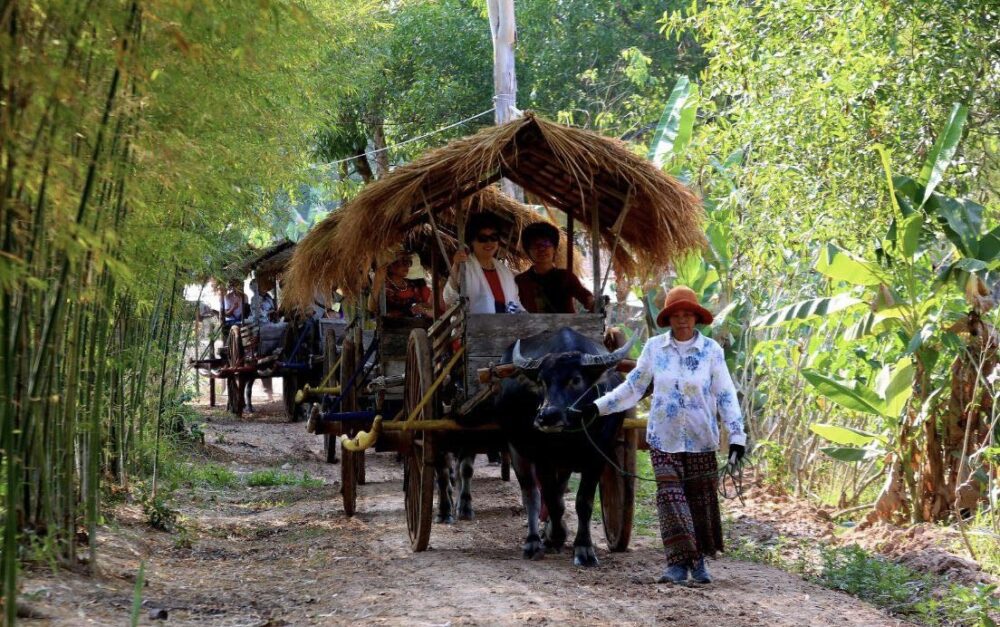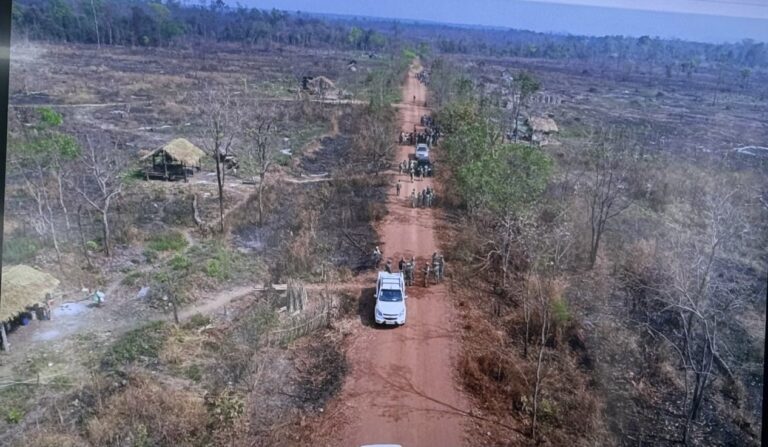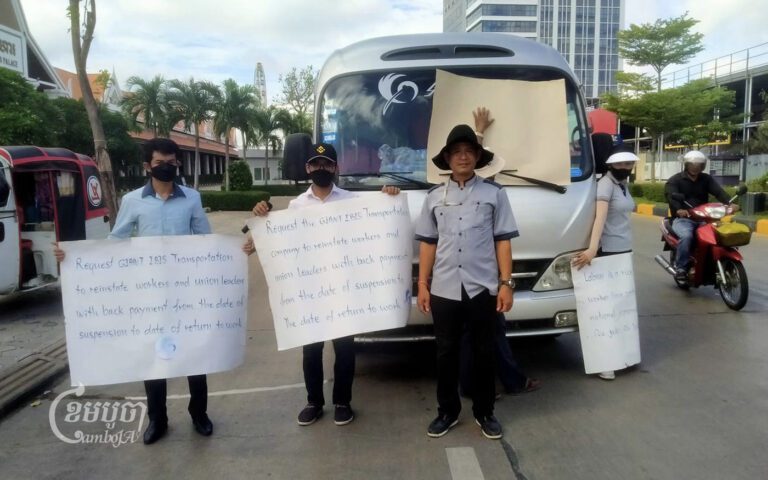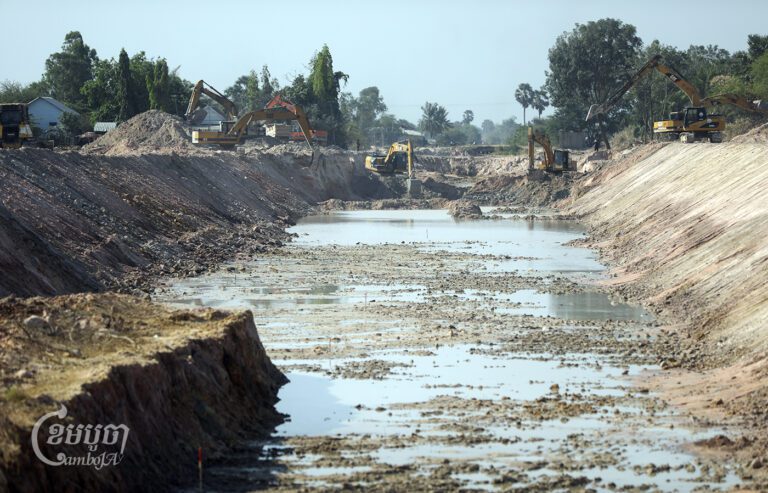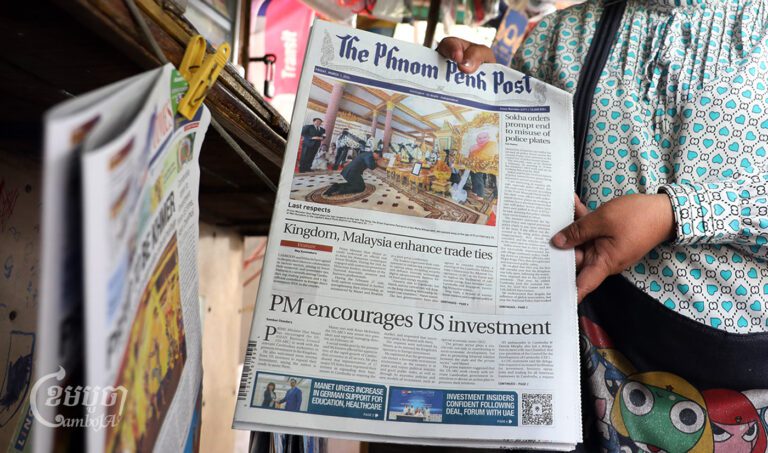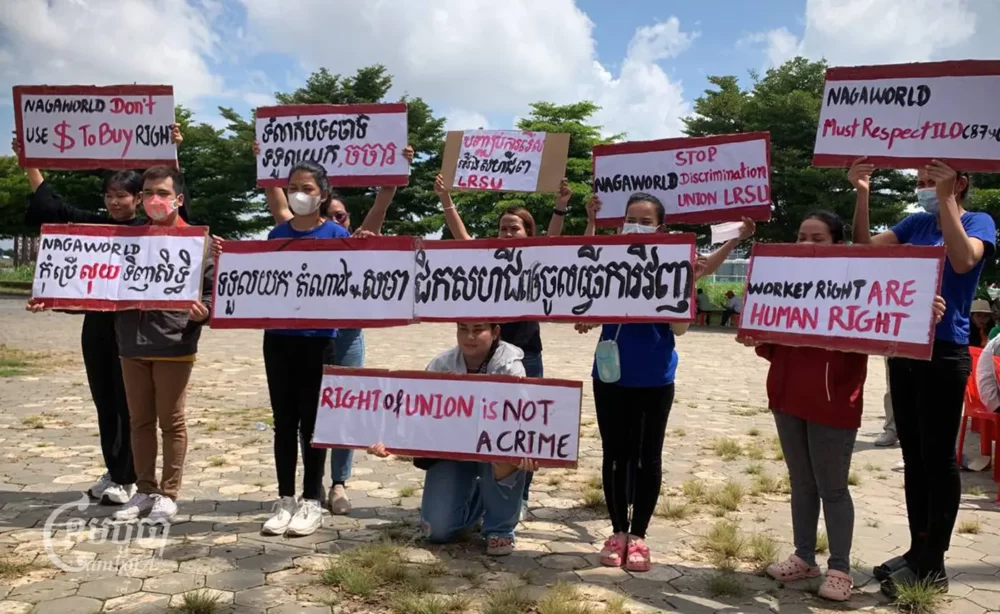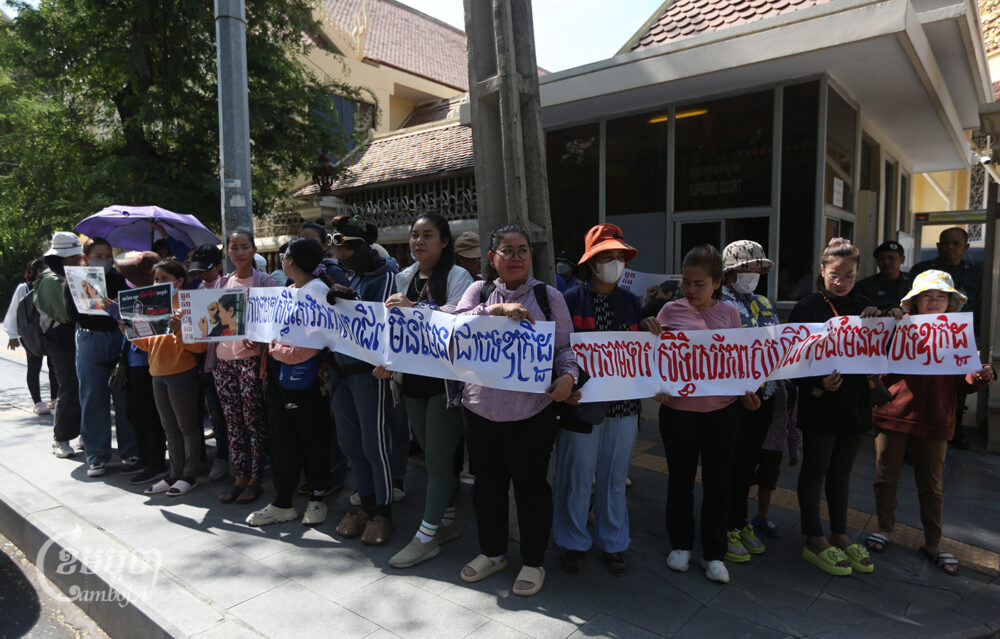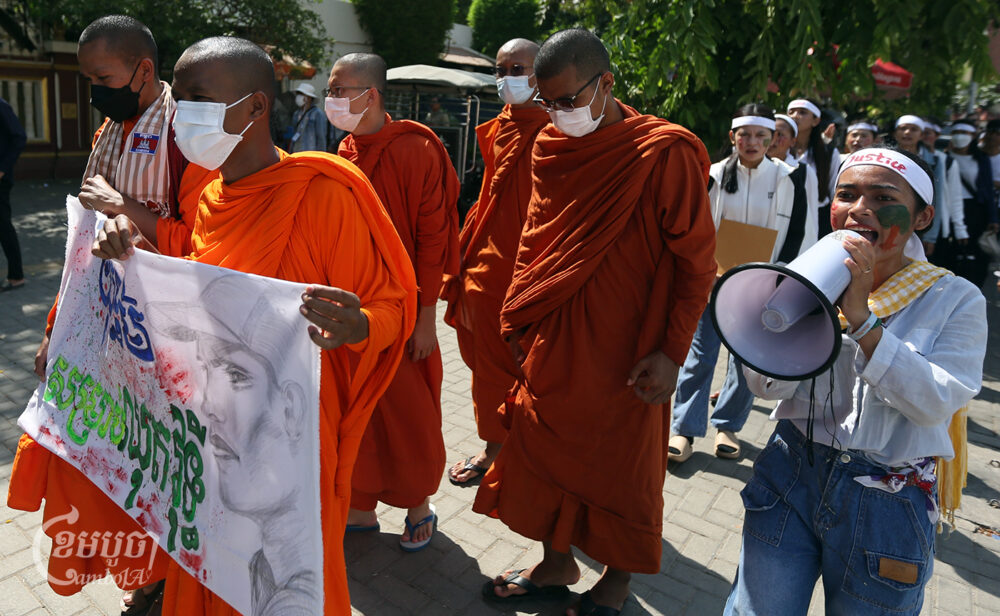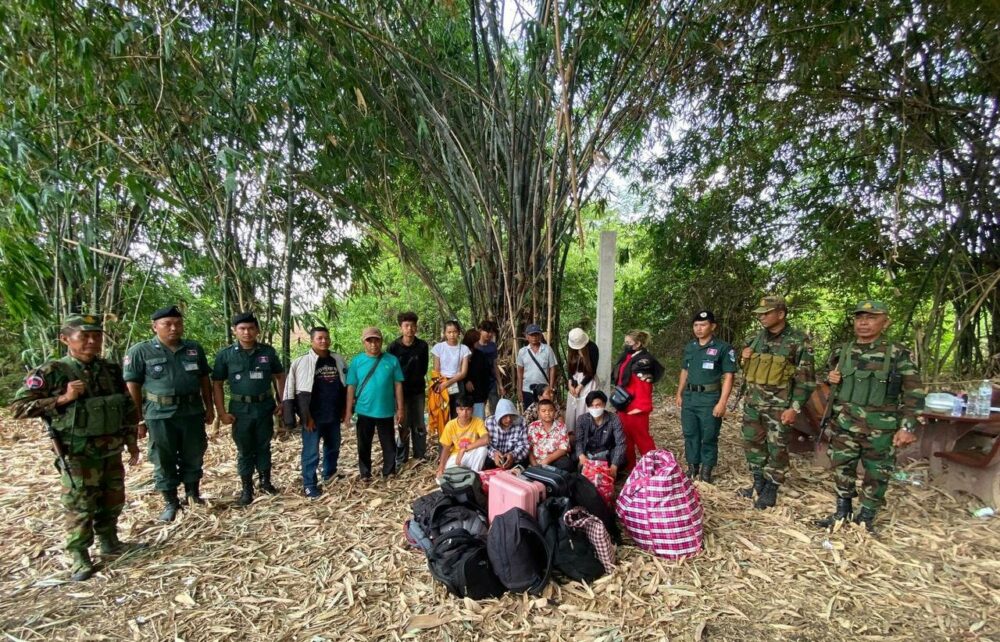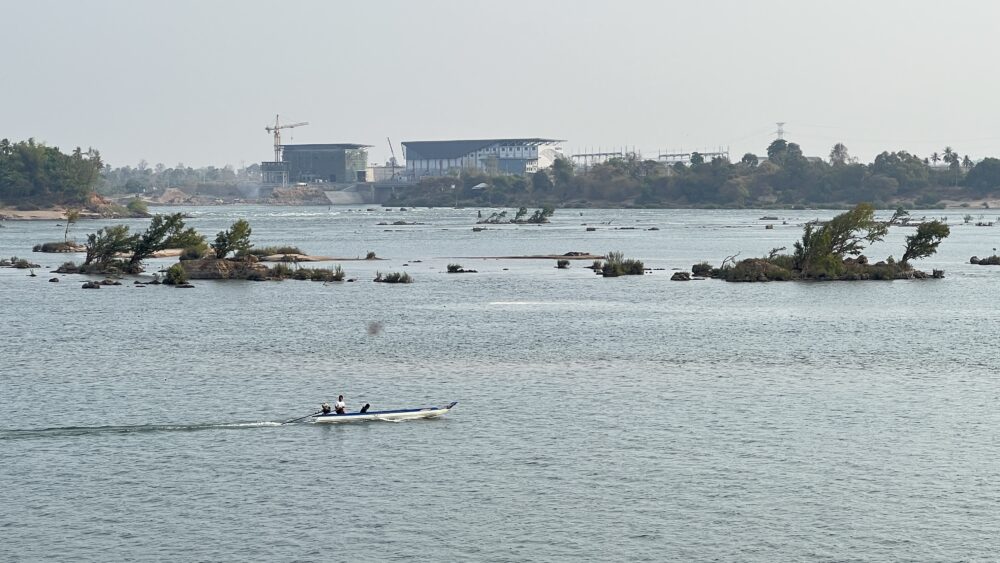The Buffalo Cart Community, a cultural tourism located 10 kilometers from Siem Reap City reopened after three years of being shuttered following the Covid-19 pandemic. The aged residents are excited to return to work, but they claim the number of visitors remains small and are mostly foreigners.
Sun Liv, 53, a buffalo cart community driver, living in Knat commune, Pouk district, Siem Reap province, three kilometers from his workplace in Teuk Vil commune, is happy to be back at work as he can once again earn an income to support his family. Even when he is unwell, it bears no hindrance to driving tourists around.
“I am happy to see guests come as I have the strength to transport them and earn money to feed my wife and children [..] Even with a fever, I am working as long as I have guests.”
Liv was earning a regular income from community work for two years before the pandemic, causing work to be suspended for three years. At the time, he said life was so difficult because he could not find anything to do and did not have enough money to buy food.
Although the buffalo cart community has been reopened for almost a year, it was only made public by the Siem Reap Provincial Administration early February this year after posting on its Facebook page.
Another driver, Che Phoeut, 57, living in Pouk district, Siem Reap province said she has been working there for almost 10 years with her husband. She said she decided to drive buffalo carts as farming did not provide an adequate income to feed her, let alone look after her grandchildren. She earns about $200 a month working with the community.
Just like Liv, Phoeut said she is excited to see visitors in Siem Reap. “When I see a lot of visitors, I am happy because I can transport [them] and every staff member can earn a salary. I’m not afraid of being tired as long as there are guests.”
However, she shared that currently, the number of tourists is not very stable. “Some days there are more, some days less and some days, just quiet.” The lack of customers has led to some community residents quitting.
She urged local and foreign visitors to try the buffalo carts in her community, which is a way of supporting their livelihood, especially older people like her, so everyone can have a job.
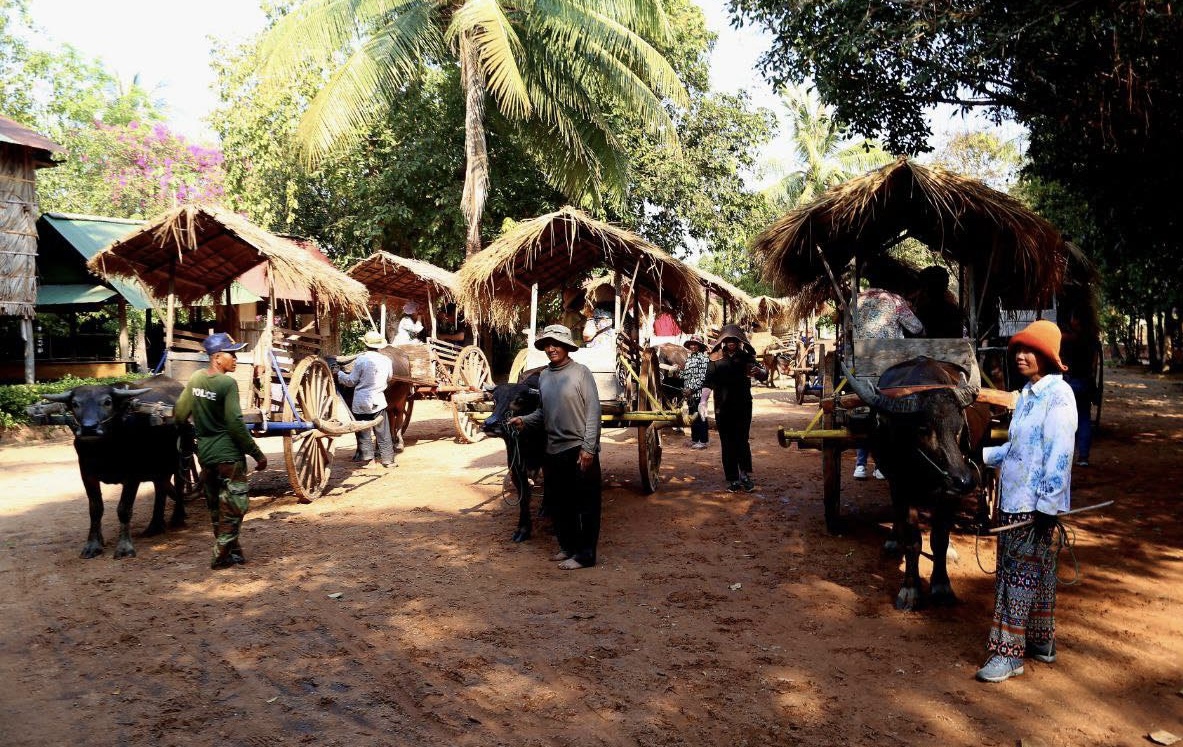
Chheng Chhorm, a community representative told CamboJA that the buffalo cart community was established in 2014 with about 40 staff members but half of them quit due to Covid-19 and the low visitor numbers. The members sold their buffaloes and took up construction work and other jobs to survive.
Currently, the remaining staff of 20 people aged between 50 and 60, continue to operate the carts with 17 buffaloes because they could not find other work.
According to Chhorm, the founder and development partner of the buffalo cart community is a Korean, who has been paying staff members’ wages and land rental since it started. “The reason he continues to support them is because he loves this place and wants to provide jobs for community residents.”
Chhorm said drivers are paid $120 dollars a month while buffalo owners get $100 dollars per beast. Local visitors pay $3 dollars per person and foreigners pay $20 dollars.
The unique thing about the community business is that guests are carried in a cart through the countryside and among rice fields, which are almost gone or no longer exist in some countries, such as in Korea.
“This is part of the conservation effort and we want to show [guests] rural life, how village folks live and do business,” Chhorm said.
After transporting guests, community members clean the community tourist sites together and beautify them, including planting flower plants.
Before the pandemic, foreign tourists used to visit Siem Reap province between September and April but that has changed as they only visit two to three months in a year and then there are none, said Chhorm.
As for Cambodian guests, he said, the number is limited as they only travel during festivals, and very few are interested in riding the buffalo carts.
Even though the community was able to reopen after Covid-19, visitor numbers are not yet strong, he said, adding that the end of December or the month of January usually sees an increased number of visitors, mostly Koreans.
In 2023, over 2.5 million people visited the temples in Siem Reap, a report by the Siem Reap Provincial Department of Tourism stated, which is an increase of 32.35% from 1.9 million visitors in 2022.
Of the total in 2023, 1.7 million were Cambodians, up 6.62%, while foreigners made up the rest, rising 177.63% year-on-year.
Chhay Sivlin, president of the Cambodian Association of Travel Agents, observed that many tourism communities in Cambodia still lacked hospitality skills, production and processing of local products, hygiene, and capital to prepare materials.
This requires the government as well as local authorities’ support to train, protect and promote tourism communities products and activities, especially in remote areas.
She suggested that the authorities allocate a budget for tourism communities to develop their community tourism product which can last longer compared to working with development partners who are only able to support them “for a while”.
“In the past, community products were strong because [of the support] of development partners. But if the partner runs out of money, they would leave the tourism communities, which would collapse immediately.”
Sivlin urged tourism communities to gain hospitality skills, learn food preparation, ensure hygiene and village cleanliness, retain original traditions, develop more creative activities, and work closely with travel agencies or tourism associations which can promote them to visitors.

Siem Reap provincial administrative director Ly Vannak said his administration and relevant authorities have been promoting the buffalo cart community.
The provincial tourism department also organizes various training, as well as finding partners to support or provide funding for communities that serve the tourism sector.
But, the provincial administration does not have its own budget to help the community, Vannak remarked. “There is not only one community. There are many and we don’t have a large budget for the communities. It’s not possible. We need to find an investment company or a partner who can help.”
That said, Vannak pointed out that the support from partners is equally limited due to limited funds. So, he encouraged tourism communities in Siem Reap who want to be part of the tourism sector to participate in their training to gain professional skills to provide tourism services and earn their own income.
Ngov Sengkak, director of the Department of Tourism at Siem Reap province, declined to comment.


